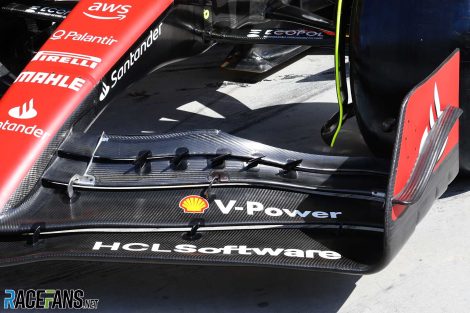Formula 1 cars have not become worse at following each other closely this year, the series’ technical director Pat Symonds believes.
Some drivers have suggested overtaking has become more difficult in the second season since F1 introduced heavily revised regulations designed to aid passing.
However Symonds told the official F1 channel that their analysis indicates this is not the case. “I’m not sure,” he said. “Our statistics of how close the cars are following don’t appear to have changed much.
“We’ve only had two samples so far so it’s a little bit difficult to tell. But it’s certainly something that we and the FIA will keep monitoring and we’ll have a look.”
The 2022 technical regulations cut back the upper surface aerodynamics of the cars and allowed teams to make greater use of ground effect to generate downforce and produce fast lap times. Key areas of the car’s design have been tightly restricted to condition the airflow which is produced and allow other cars to follow more closely.
Symonds said he has seen few changes on this year’s cars which have altered that. “I talk to my aerodynamic colleagues in the FIA, we haven’t seen anything in the cars that really makes us think that things have fundamentally changed,” he said.
“So at the moment, a watching brief – nothing to be terribly concerned about. I guess that we always expected the cars would evolve to be slightly worse rather than slightly better in this respect.”
Advert | Become a RaceFans supporter and
He is convinced F1 cars can still follow more closely than they could in the final season of the previous rules set. “We had such a margin between ’21 and ’22 in terms of close following capability that even if we’ve lost a little bit of it, we’re still way, way better than we would have been had we not done anything.”

A specific goal of the 2022 rules was to prevent teams creating aerodynamic surfaces which produced an ‘out-washing’ affect, directing air from the sides of the chassis, which was found to particularly affect pursuing cars. Symonds said F1 anticipated that teams would try to recreate this effect as much as possible.
“This is the way they find performance, to try and reintroduce that out-wash,” he said. “There was a little bit of a change in the nuance of the wording of what you can do with the flap gap separators. People are using that a little bit to push…
Click Here to Read the Full Original Article at RaceFans…
